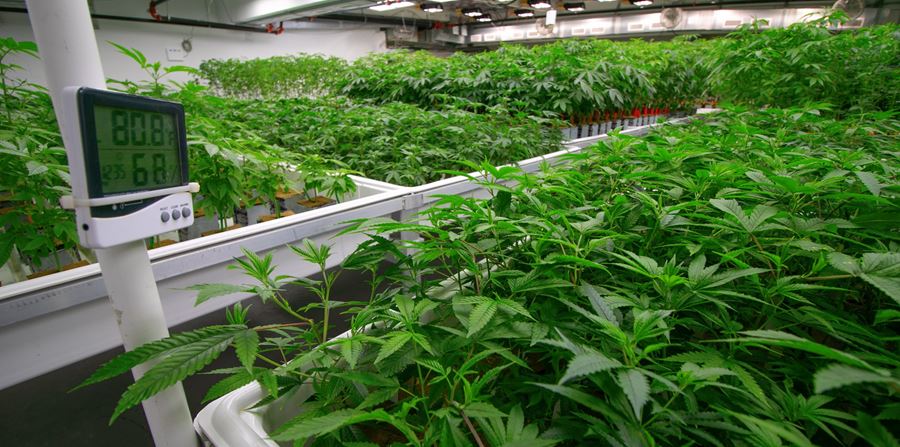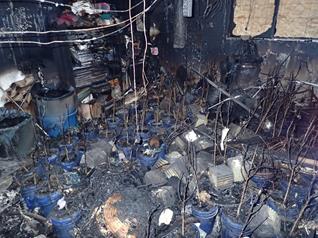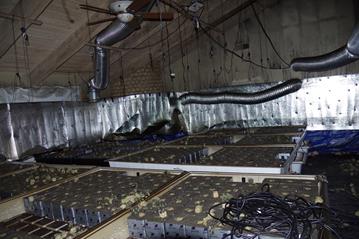Up in Smoke: The Dangers of Cannabis and Hash Oil Operation Fires

Cannabis cultivation operations have been around for years but with the recent legalization in various U.S. states, the number of regulations and standards on legal operations has increased. Following this legalization, the National Fire Protection Agency (NFPA) created NFPA 420: Standard on Fire Protection of Cannabis Growing and Processing Facilities. This, along with other standards, has helped guide the safety of facilities that produce, process, and extract cannabis, but the large number of illegal operations which do not adhere to these standards is rising. The ever-growing types of THC extraction have become an additional hazard to contend with and the methods continue to evolve.
There are numerous hazards investigators and engineers face when dealing with a cannabis cultivation operation, which is why proper personal protective equipment (PPE) is necessary for those on-site. Each scene is a little different but typically a filtered mask, hard hat, nitrile gloves, eye protection, and a coverall suit with shoe coverings are required. Mold is an ever-present hazard in these environments due to moisture and the typical ineffective regulation of it in these operations. An often-forgotten deadly hazard is electricity and chemicals, as some operations use chemicals in their processing either as a true part of it or as a test to change concentrations or psychological effects. When on-site, one should assume if something is a liquid or powder, that it is an unknown chemical, even if it is labeled, to ensure safety.
Due to the necessity for lighting, fans, dehumidifiers, and other electrical devices, indoor operations normally consume a lot of electricity. To get around the high utility bills and possible red flags to local agencies, many of these operations will bypass the electrical service meter or use power from adjacent structures. Even if the service meter has been removed, it is likely that there is still power connected to the structure, and it is important to take precautions until it is proven otherwise. Many times, distribution devices, such as power strips and extension cords, are of poor quality and have a higher possibility of being overloaded, which poses a serious fire and safety risk.
In this article, we will discuss some of the typical problems which are found in relation to the cause of fires in cannabis operations.
Electrical Circuits
Since cannabis cultivation operations are becoming more prevalent with added legislation, licensing and code requirements are still evolving. We are still faced with numerous hazards of unlicensed or illegal operations with a primary problem of the electrical aspects. The electrical work performed, in the illegal operations, are not usually up to code or what would be considered safe practice. Even in licensed operations, electrical work may be performed by unlicensed individuals when the operation is trying to save in costs.
As mentioned above, when entering one of these operations, one should always assume power is still connected until proven otherwise. Electrical service bypasses are typically located above the main service meter for the structure, and due to the clandestine nature of the operation, this is typically only visible from the interior of the structure.
Electrical service can also be used from an adjacent structure, with the wiring buried or hidden by other methods. In multi-tenant buildings, power is sometimes scavenged from adjacent panels or circuit breakers. Many of these connections or splices are with items available at that time, such as welded, nuts and bolts, or twisted onto the conductor with no covering. Poor and improper connections can cause overloading, resistive heating, and arcing, which can then cause ignition to surrounding combustibles.
Due to the heavy electrical draw on the system, primarily to lighting and climate control, the existing circuits are often overloaded, causing wiring and connections to degrade, and tripping the circuit breakers or fuses. A routinely tripping circuit breaker oftentimes leads the operator to simply replace the circuit breaker with one with a higher amperage rating, which does nothing but create a bigger problem of overcurrent on a circuit.
Powered Equipment
Legitimate Underwriters Laboratory (UL) rated cannabis cultivation equipment is readily available from quality manufacturers. Though, due to the expensive nature of these products, cheaper manufacturers and products are typically used. As the saying goes, “you get what you pay for,” and this is normally the case for cannabis cultivation equipment. The lack of quality control, standards, and testing can lead to a vast array of malfunctions. Poor contact on connecters is often seen, which leads to resistive heating and arcing. Corrosion can also occur with the same ignition cause because of the humid environment or exposure to chemicals. Additionally, with the high probability of errant electrical activity and poor connections, resistive heating, arcing, and melting can occur.
Lighting
When it comes to indoor operations, lighting is essential. More light means bigger yields for growers. There are three major types of lighting, fluorescent, high-intensity discharge (HID), and light-emitting diode (LED).
Fluorescent
The two types of fluorescent lights used in cannabis growing include compact fluorescent lights (CFL) and T5 grow lights. CFL grow lights are the small twisty-looking bulbs you can find anywhere you normally buy light bulbs. They can be used in tiny spaces where no other grow light would fit, such as the inside of a cabinet. With a small space, lack of spacing or ventilation can cause heat buildup and the degrading of components, leading to errant electrical activity. T5 grow lights are one of the most easily available types of grow lights and are used to grow many different types of plants. These can be found in many garden and home improvement stores.
High-Intensity Discharge (HID)
HID lights used in cannabis growing include metal halide (MH), high-pressure sodium (HPS), ceramic metal halide (CMH), and light-emitting ceramic (LEC) grow lights. HID bulbs get really hot and generate a lot of heat. The surface temperature of the bulb can range from 500 to 1000°F. Due to the concentrated heat production, the bulb should be placed in a hood with some sort of cooling to prevent or dissipate heat. This is especially important for the bigger lights with power above 250W. As a result of this immense heat, most growers use an exhaust fan with ducting to vent out heat, which adds additional equipment that can fail.
Light Emitting Diode (LED)
LED lighting is the newer trend in the cost-saving aspect of these operations. Although LED lamps usually run a lot cooler than a similar wattage HPS bulb, they still produce heat, and the bigger sizes, like 300W+, may need to be vented with an exhaust fan to prevent overheating. Water-cooled LED fixtures are becoming popular as well to deal with the amount of heat normally produced during operation.
Pressure Vessels
As we learned in high school biology, plants consume CO2 to produce energy through photosynthesis. Cannabis growers supply CO2 gas into grow areas to significantly increase flower output of the plants; larger flowers equals higher profit from each plant. Over-pressurization of piping from high-pressure CO2 tanks, inside or outside the building, can be a significant hazard. Without proper safety pressure relief valves installed, gas piping can become a grenade if an accidental overpressure condition occurs.
Criminal Revenge
Due to the illegal aspect of these operations, criminal intent is a real factor in the cause of a fire. Competition between nearby operations, money owed, and theft of equipment or product are often motives. More often than not, the suspects and individuals involved in the cultivation are never seen again.
Hash Oil Extractions and Their Hazards
The butane honey oil or butane hash oil (BHO) method to extract oil uses butane gas to break off and dissolve the trichomes into the solvent and carry it away from the plant material. The butane is dispensed as a liquid but quickly turns into a heavier than air gas that accumulates in low-lying areas. This condition creates a highly flammable dangerous environment. Ignition sources can be similar to that of a typical natural gas leak in a structure, such as pilot lights, candles, electrical items, or the lighting of cigarettes.
The BHO method provides for a higher yield than other methods and the product can be consumed in vape pens, candies, waxes, and other forms that are increasingly popular. State-licensed producers of hash oil utilize sophisticated systems that can cost hundreds of thousands of dollars. Those wanting to make hash oil at home don’t have to spend nearly as much but results in the lack of safety procedures and risk to themselves and those in adjacent living structures.
Conclusion
As the legalization of cannabis continues throughout the country, the existence of fire and safety hazards will continue to be present. Those having to deal with the investigation and claims must stay up to date with the trends of cannabis growing and learn how to safely mitigate the potential remaining dangers. Effective evaluation of potential equipment failures in cannabis operations is extremely important, as the dangers can be serious. Knowing the proper precautions and having trained professionals and experts to advise and guide through the dangers and potential problems is critical.

Photos of a real-life burned cannabis operation.
Our experts are ready to help.



